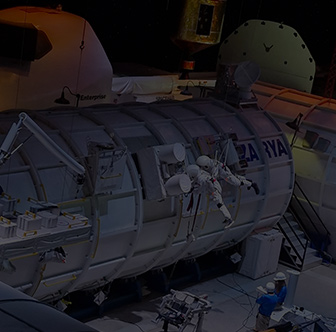KENNEDY SPACE CENTER, Fla. — Boeing’s CST-100 Starliner spacecraft is in orbit on its first crewed flight after two recent launch scrubs and years of development delays.
A United Launch Alliance Atlas 5 lifted off from Cape Canaveral Space Force Station in Florida at 10:52 a.m. Eastern June 5 on the Crew Flight Test (CFT) mission. Starliner separated from the Centaur upper stage 15 minutes after liftoff and completed an orbital insertion burn with its own thrusters 16 minutes later, placing the spacecraft into low Earth.
“With Starliner’s launch, separation from the rocket and arrival on orbit, Boeing’s Crew Flight Test is right on track,” Mark Nappi, vice president and program manager of Boeing’s commercial crew program, said in a company statement shortly after orbital insertion.
On board Starliner are NASA astronauts Butch Wilmore and Suni Williams. The spacecraft is scheduled to dock with the International Space Station at about 12:15 p.m. Eastern June 6. The spacecraft will remain at the station for at least eight days before undocking, landing several hours later in the southwestern United States.
In addition to Wilmore and Williams, Starliner has about 360 kilograms of cargo on board. That includes a new pump for a urine reprocessing system on the International Space Station added to the spacecraft last week after the existing pump on the station failed. The 70-kilogram pump is taking the place of two suitcases of clothes and hygiene supplies.
This was the third launch attempt for the CFT mission. The first attempt May 6 was scrubbed about two hours before the scheduled liftoff when an oxygen relief valve in the Centaur upper stage started oscillating. ULA rolled the rocket back to its integration building to replace the valve.
While that work was underway, Boeing investigated a helium leak in one thruster in Starliner’s service module. The company and NASA concluded that the thruster could fly as-is, but in that process discovered what the agency called a “design vulnerability” in the spacecraft’s propulsion system that required development of a new backup model to ensure the spacecraft could perform a deorbit burn should a rare combination of failures occur.
The second CFT launch attempt June 1 was halted a little less than four minutes before liftoff. ULA determined that a power supply in a ground computer rack malfunctioned, and replaced and retested that system. That work pushed the launch back to June 5.
The launch comes after years of development delays with the spacecraft, which suffered problems ranging from faulty software and corroded valves to parachute components with inadequate safety margins and flammable tape used in spacecraft wiring. Those problems required Boeing to fly two uncrewed test flights rather than one as originally planned.
Boeing received a $4.2 billion fixed-price contract in September 2014 to complete development of Starliner and fly six operational missions to ferry crews to and from the ISS. SpaceX, which received a $2.6 billion contract at the same for its Crew Dragon spacecraft, launched its first crewed mission, Demo-2, in May 2020. The company is now on its eighth operational mission to the ISS.






